Access More Boat Tests
Already have an account? Login
Alfastreet Marine 23 Cabin EVO (2023-)
Piktronik UWM10 10kW (13.9 hp) / 205 amp motor
Brief Summary
This electric Cuddy Cabin has everything you need to spend a great day on the water with your family or friends. Its comfortable and luxurious lounge area can accommodate up to eight people and there is plenty of space left to move around. The cabin is still spacious enough to be equipped with a practical galley kitchen and a toilet. The bathing platform is now even more accessible with two side entrances and it also boasts a unique extendable sunbed on the stern.
Specifications
| Length Overall |
25’ 7’’ 7.8 m |
|---|---|
| Beam |
7’ 10’’ 2.39 m |
| Dry Weight |
4,630 lbs 2,100 kg |
| Tested Weight |
5,160 lbs 2,341 kg |
| Draft |
1’ 8’’ 0.51 m |
| Person Capacity | 8 |
| Water Capacity |
13.2 gal 50 L |
| Total Weight |
5,160 lbs 2,341 kg |
Acceleration Times & Conditions
| Load | 1 person; 200 lbs US |
|---|---|
| Climate | 92 deg., 70 humidity; wind: 6-12 kts; calm seas |
Engine Options
| Tested Engine |
Piktronik UWM10 10kW (13.9 hp) / 205 amp motor |
|---|---|
| Std. Power |
Piktronik UWM10 10kW (13.9 hp) / 205 amp motor |
Captain's Report
Alfastreet 23 Cabin EVO
by Capt. Gregg Clark
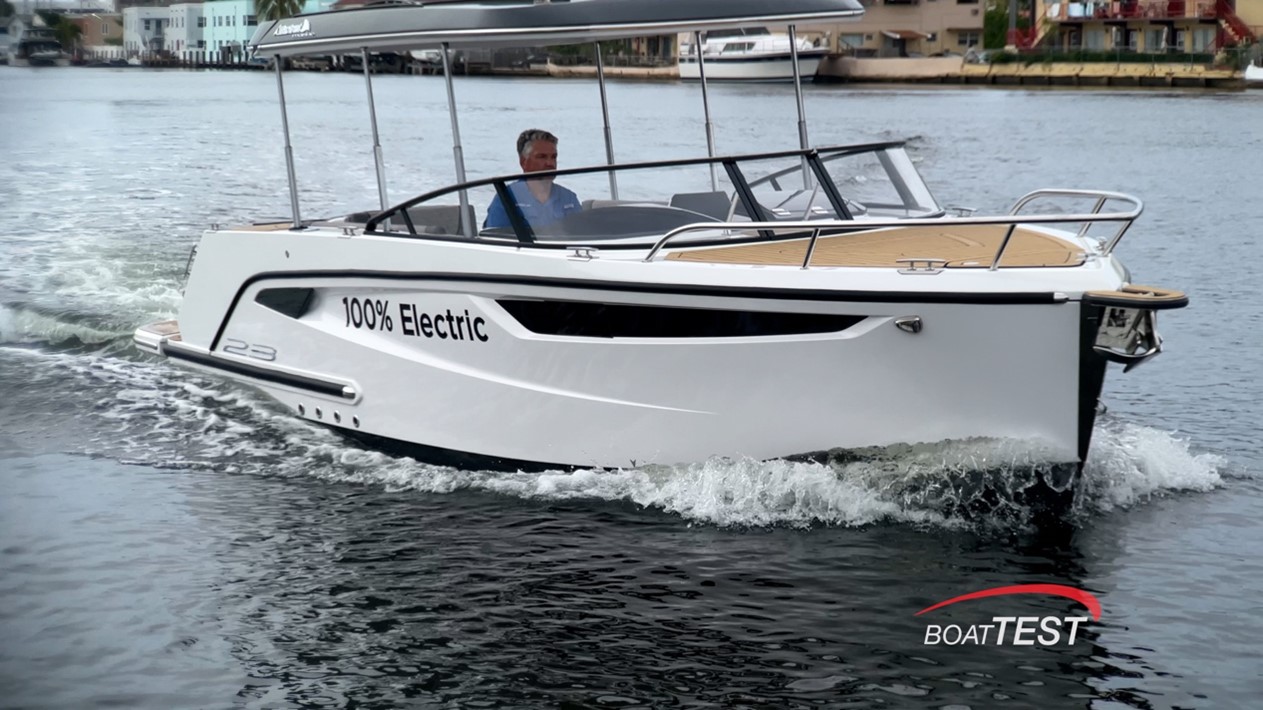
Brief Description
The Alfastreet 23 Cabin is an elegant all-electric cocktail cruiser designed for idyllic cruising lakeside and through canals and rivers where the objective is to enjoy the camaraderie of friends and the visual pleasures of the passing scenery. She is powered by a Piktronik 10 kW (13.0 hp) electric motor propelling her as fast as 7.2 mph. She mixes style, grace and quality with the coming-of-age look and functionality of an electric boat.
Mission
The Alfastreet 23 Cabin EVO is built in Slovenia and targets an owner/operator who believes life is about the journey, not the destination. She is designed as a cocktail cruiser, or joyrider as Alfastreet likes to say, and can accommodate up to 8 people for causal cruises in lakes, rivers and near coastal waters. This boat is designed for entertaining family and friends in a well-built, open and functionally well-thought-out platform. The cockpit offers 360° views for all aboard and comfortable seating for all. Being an electric boat, one of the biggest benefits is the whisper-quiet operation. It is a unique and calming experience to cruise and feel fully connected to the environment. She also has an innovative hydraulic top that moves to 3 distinct positions with just a push of a button.
Performance Review
Specifications
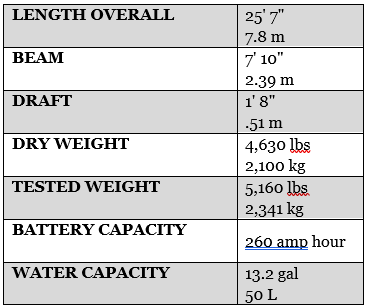
Engine Options
![]()
Test Conditions
Test day brought moderate breezes of 6 – 12 knots and calm seas as all tests were conducted in the smooth and protected waters of The Stranahan River by Hollywood, FL along with The New River and Tarpin River in downtown Fort Lauderdale, FL.
Handling when leaving and returning to the dock was easy given the large turning capability of the electric motor (rotates through ~80°) and the Lewmar electric bow thruster. The smooth and instantaneous, yet not overpowering, availability of power will allow even novice boater to look like a pro in close quarters maneuvering right from the start.


Performance Test Results*
Once underway, our first tests were performance runs to determine the speed, power consumption, runtime, range and noise levels (measured in decibels or dBA) at specific RPM.
Given the 23 Cabin EVO is an electric boat, the Captain’s Report will show Amps on tables and charts. Amps are a measure of current and are analogous to MPG. Just as a gas outboard consumes more fuel at higher RPM, an electric motor consumes more Amps at higher RPM.
For an electric motor, range is a function of runtime. Runtime is calculated by dividing the battery capacity (in the case of the 23 Cabin EVO, 260 amp hours, written as 260 Ah) by the current draw. All numbers stated for the 23 Cabin EVO include a 30-minute buffer to return to the dock. Multiple the runtime by the speed will result in range.

**Includes 30 minutes of reserve runtime
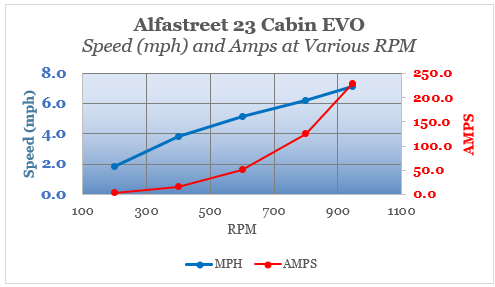

Acceleration Times & Conditions*
The next test was the acceleration runs. Here, 2 tests were conducted and then averaged to get the time from 0 mph to select speeds. With the Piktronik 10kW motor, the 23 Cabin EVO had an acceleration time of 21.1 seconds from 0 mph to 7.3 mph, her maximum speed.

**7.2 mph was the average maximum speed
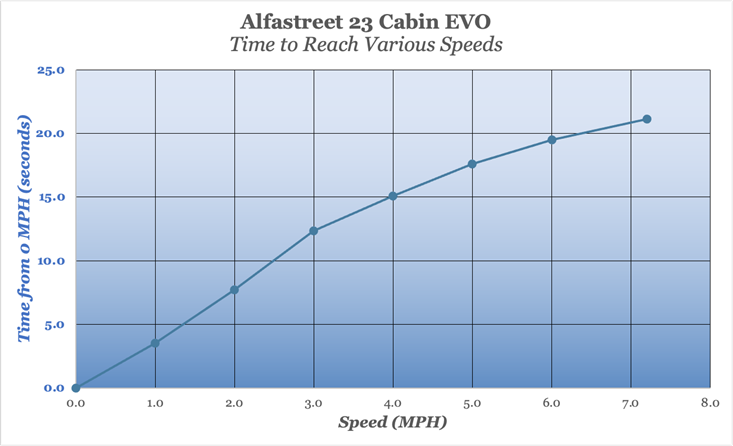
Range and Optimal Cruise
From the numbers of our tests, the 23 Cabin EVO has a range between 4.1 and 153.5 statute miles.
Given this is a cocktail cruiser she is intended to go slow. However, I doubt anyone would enjoy cruising below 5 mph. This can easily be reduced to less than 4 mph when running against a tide. Therefore, I believe the range number to look at are those 5 mph and above. Within the range, the optimal cruise is likely in the 600 – 800 RPM range, giving between 1 hour and almost 4 hours of operating time with a 30 minute buffer built in.

The other consideration for optimal cruise is the curve of the amp draw versus speed. While there is a slight increase in slope of the amp draw line between 600 and 800 RPM, it increases even futher above 800 RPM, causing an expotential drop in runtime.

Handling
The Alfastreet 23 Cabin EVO is an amazing boat to handle. First, since she is a cocktail cruiser, so every maneuver is slow forcing the operator to adopt my maxim of maneuvering in close quarters – slow is pro! Unlike a gas-powered boat that goes from zero, to some idle speed once the throttle is engaged, the electric motor of the 23 Cabin EVO is proportional, meaning that a small advance generates only a very small amount of forward or reverse thrust. However, given the responsiveness of electric motors, further application of throttle results in almost instantaneous additional speed. This proportional power greatly increases her ease of handling.
The wide range of rotation of the motor (~80°) compared to a traditional gas outboard engine (usually 30° to 40°) means the motor can be used for forward or reverse thrust or, with the helm hard over, almost 50% of the applied power will produce lateral thrust at the stern. It almost felt like she had a stern thruster in addition to the bow thruster.
Turn Radius
Note– turn radius is actually turn diameter, but commonly referred to as turn radius or the distance to turn the boat through 180°
The turn radius of the Alfastreet 23 is remarkable. 200 RPM propelled the boat at 2.2 mph, which could be considered idle speed, she had a turn radius of just 43.4 feet, turning in less than two of her lengths, in 21.3 seconds. At max throttle, she turned in 69.8 feet, or three of her lengths, in just 10 seconds. Simultaneous application of the bow thruster or the use of backing & filling techniques would allow the 23 Cabin EVO to turn within her length at any speed.

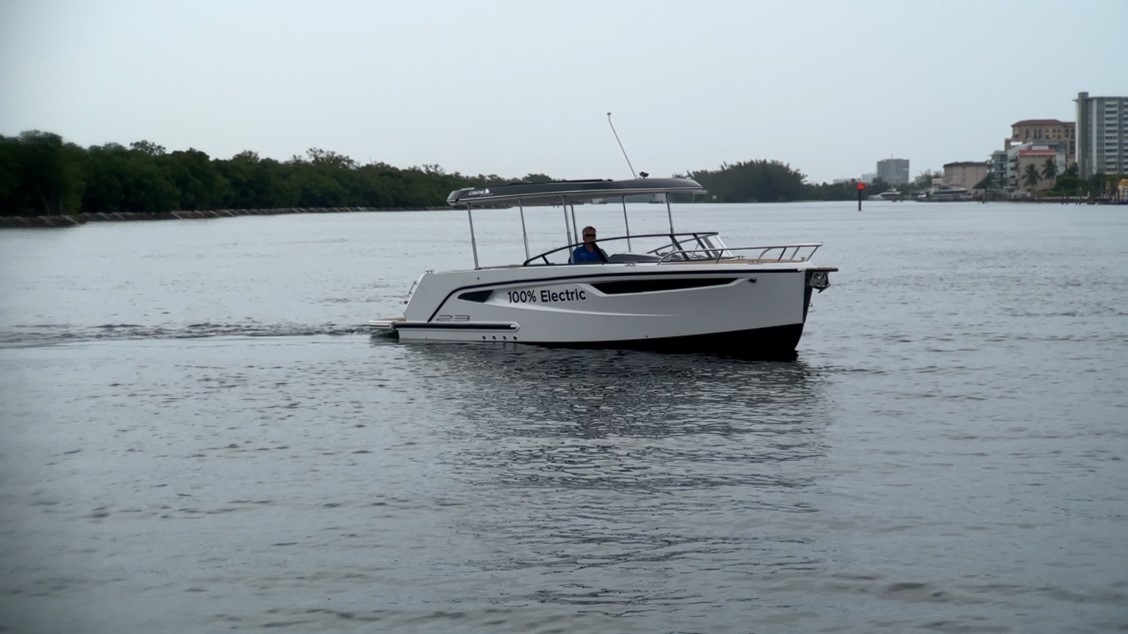
Docking
Docking the Alfastreet 23 Cabin EVO is unlike docking any other single screw boat I’ve driven. The wide angle of rotation of the motor, the ability to maneuver her at any speed from 0 to over 7.2 mph through proportional throttle control and her Lewmar bow thruster make docking and undocking so easy.
She can be brought close to the dock at just about any angle and easily maneuvered by turning her within her length and then “walking” her to the dock with the bow thruster and motor turned 45°. Put the helm hard over away from the dock and give a little throttle to get her walking, then straighten the helm and apply just enough reverse power to hold her in place fore and aft. Do this one or two times and she will nestle up close to the dock, making even the novice captain look like a pro.

Design and Construction
The Alfastreet 23 Cabin EVO is constructed in a female mold with a gelcoat base and structural elements of fiberglass / GRP (glass reinforced plastic) to CE Category C standards for performance and sea keeping, meaning she is built to operating in coastal waters and large bays and lakes with winds to Force 6, up to 27 knots, and significant seas 7 feet (2m) high. Being a cocktail cruiser, her cruise speed is just over 6 knots (7 mph). As the 23 Cabin EVO is built to the same specifications as Alfastreet’s inboard and outboard model, she is well overbuilt for the speeds of an electric boat.
What stood out for me was the quality and durability of many elements of the boat. Examples are the cleats, bow railing and forward window latch and trim which all had the sturdy and appealing design of features of much larger vessels that would fall into the yacht class.

Features Review
Highlights
- CE Category “C” – Ocean Certified Vessel
- Piktronik UMW10 10kW maximum electric motor and associated controls
- Lewmar proportional bow thruster
- Simrad MFD
- GD2 Engine Battery and Motor Monitoring
- Fusion stereo with 4 speakers
- Forward cabin with a concealed marine sanitation device
- yacht-qualityCockpit with seating for 8-10
Exterior

The 23 Cabin EVO is a sleek and futuristic design that prompts long looks and inquiries by those who set eyes on her. Future owners should be prepared to often explain the boat, her design characteristics and her future-looking propulsion.
Bow
The bow, as well as the rest of the decking, is covered in permateak. The stainless bow rail and cleats are overbuilt and of yacht quality. The anchor locker provides easy access to the anchor shank, rode and Lewmar windlass.
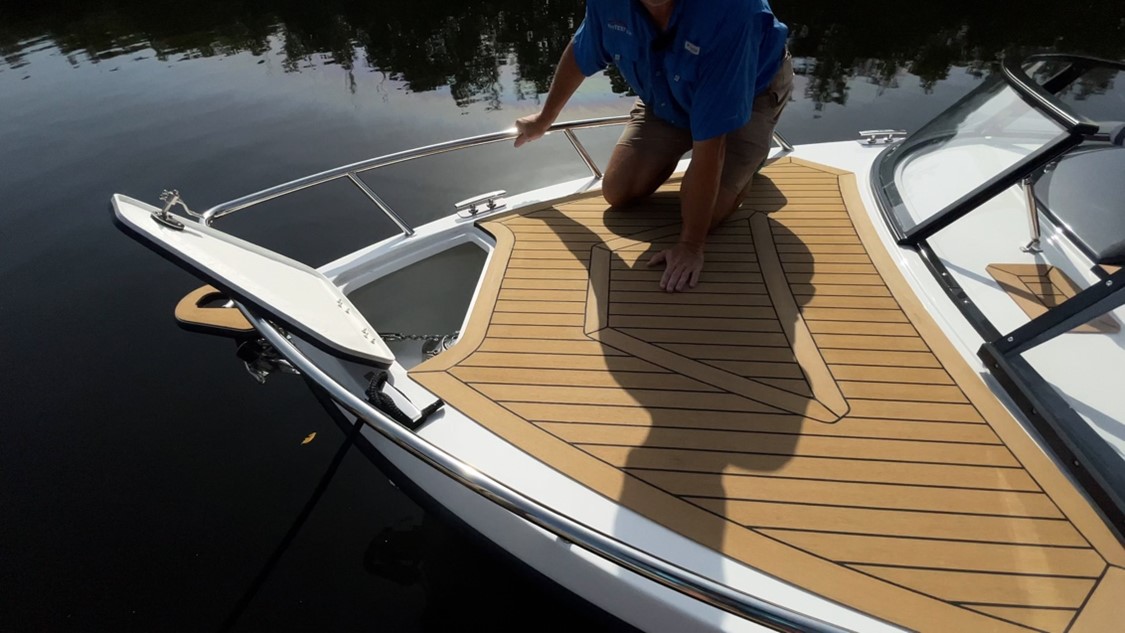
There is a 10 pound stainless bruce anchor that should provide sufficient holding power for a boat weighing ~5,000 pounds.

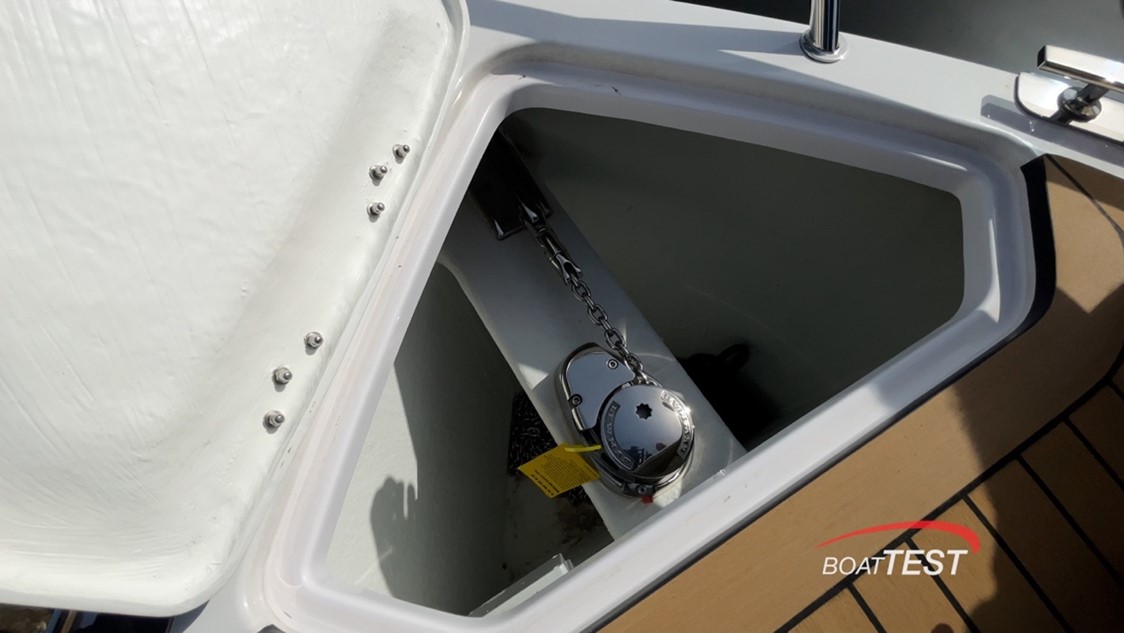
The entrance to the bow from the cockpit is via three steps and through a sturdy window that opens to port.

Helm
The helm to starboard in the cockpit offers everything required to operate the 23 Cabin EVO. There is a brushed stainless steel shifter / throttle, a control for the Lewmar bow thruster, a Simrad MFD, a GD2 engine and battery monitor, all the required toggle switches and a leather wrapped wheel.
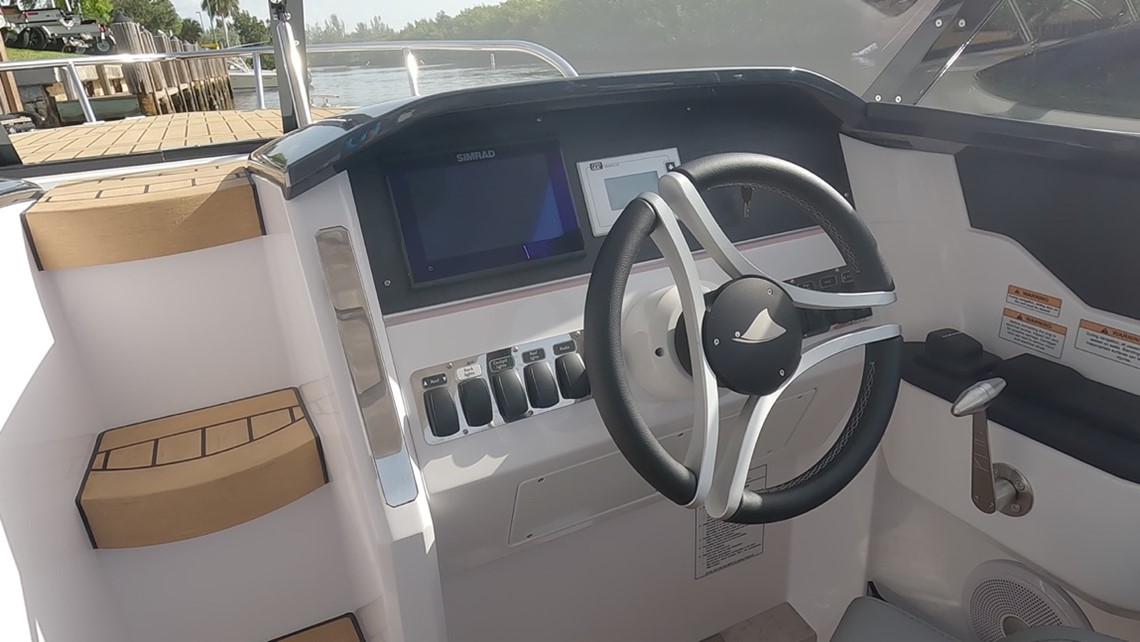
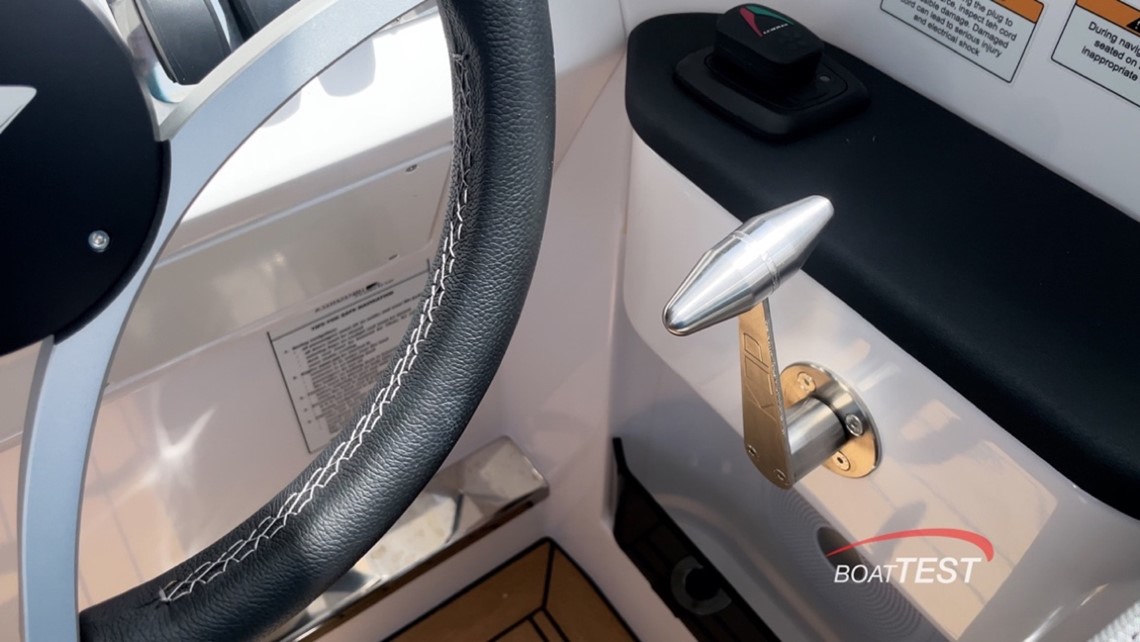


Cockpit
As a cocktail cruiser, the cockpit is the centerpiece of the Alfastreet 23 Cabin EVO. The entire boat is designed around this open and inviting space. 8-10 people can comfortably fit around the opening cocktail table. The helm and companion chairs swivel to join the group when not underway.
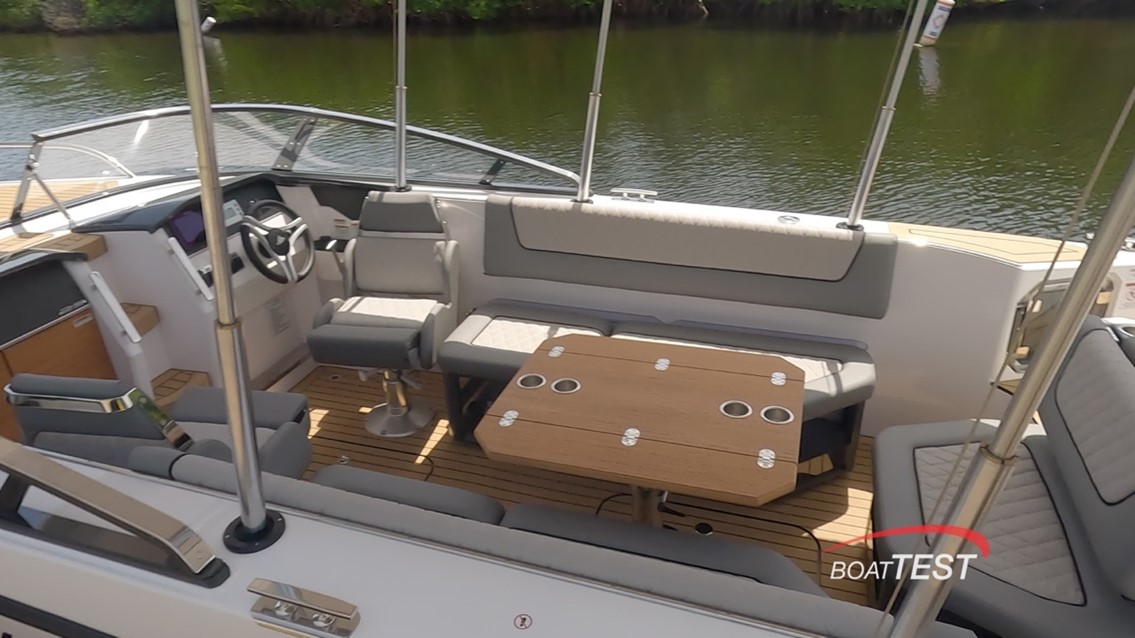
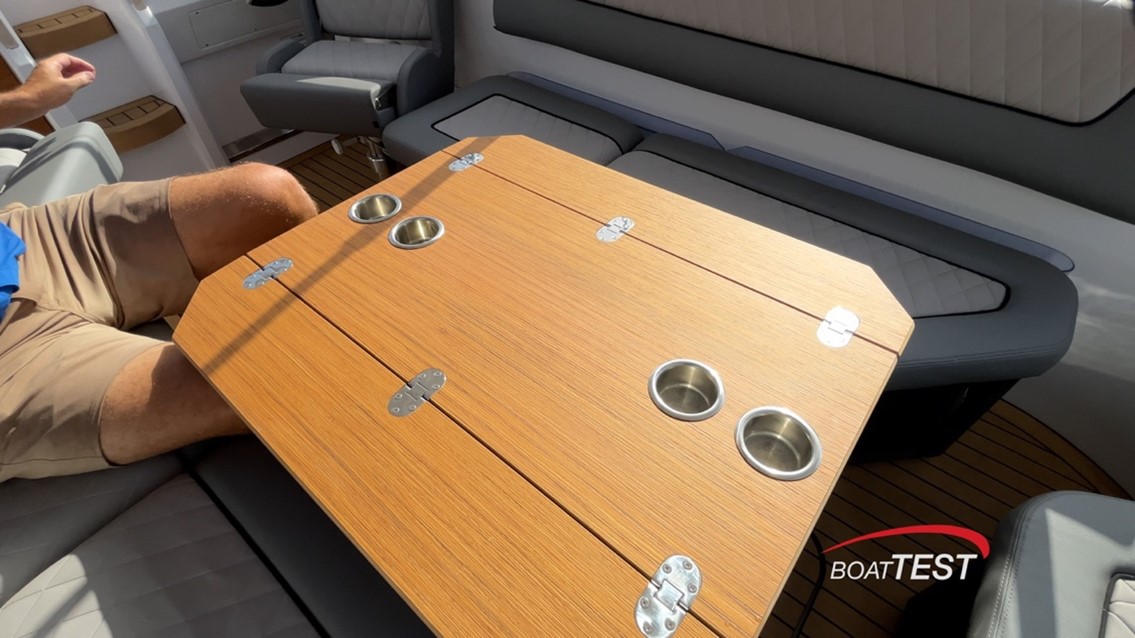
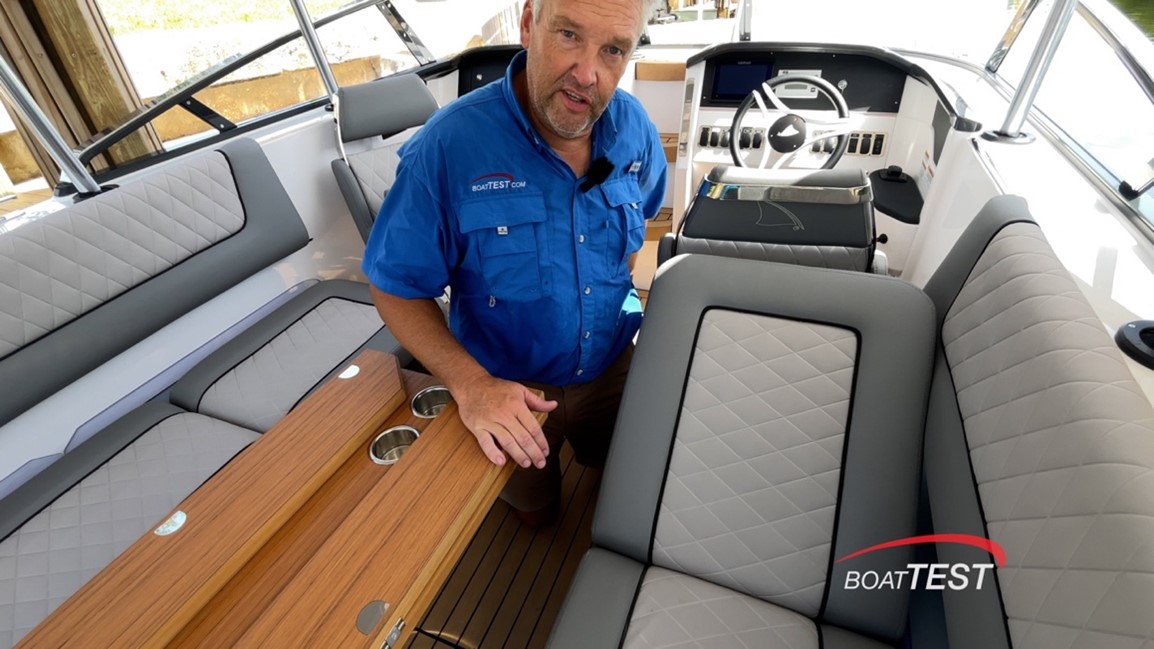
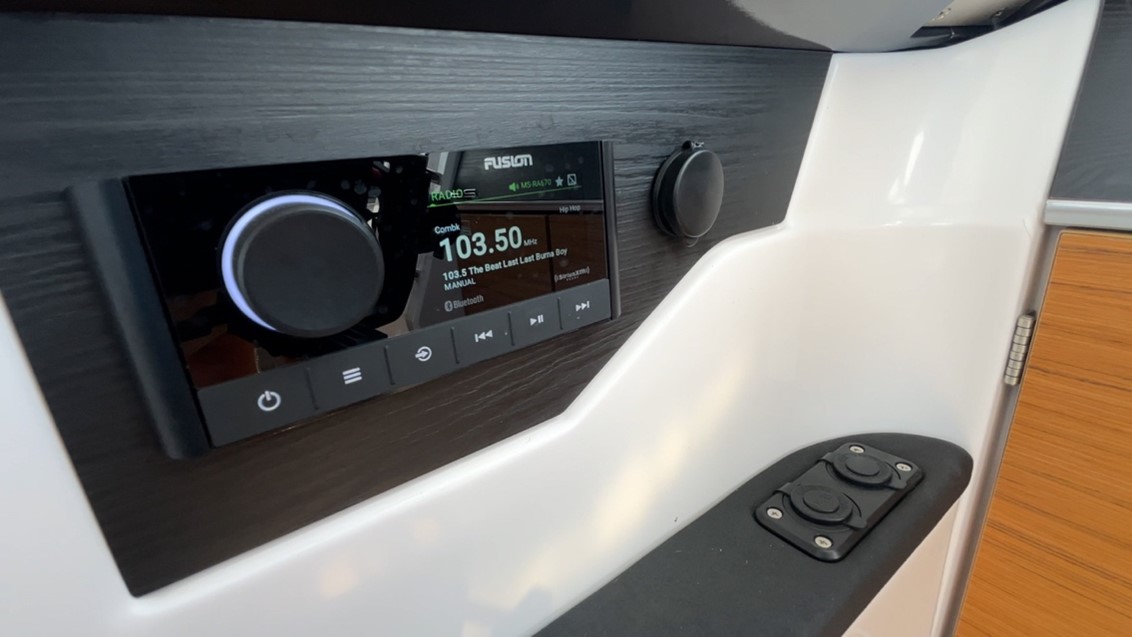
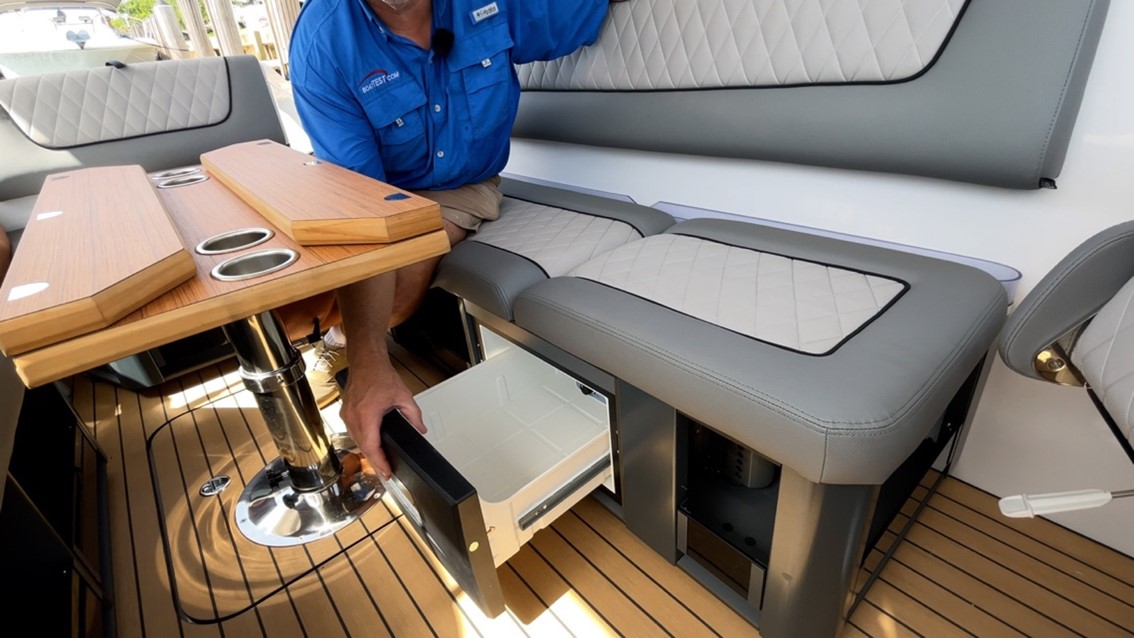

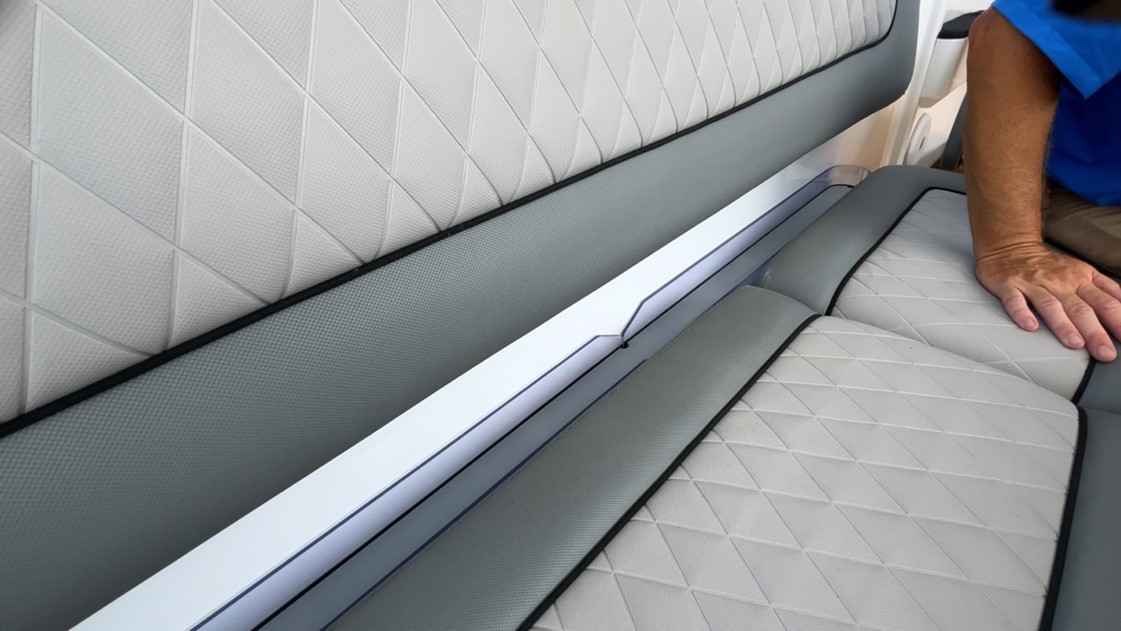
Swim Platform
The Alfastreet 23 Cabin EVO swim platform is 2’ deep and covered in the same permateak as the rest of the boat.

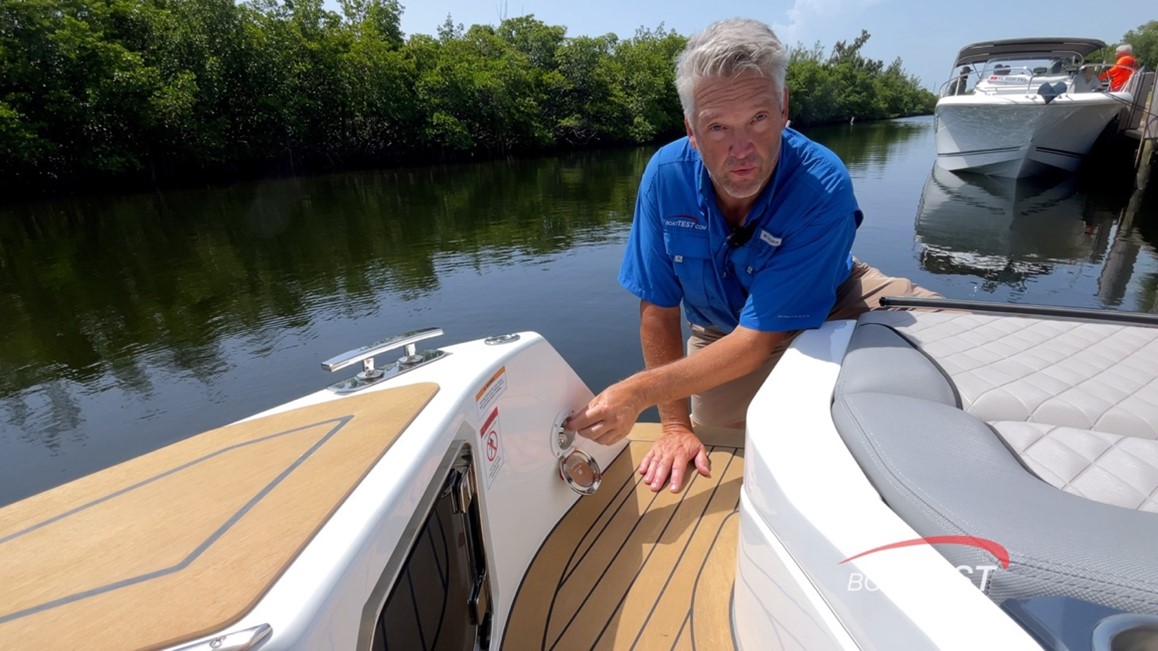
Aft Sun Pad
There is an aft sun pad that extends and has a lifting back to enjoy the view astern or simply to sun bath. The sun pad is on top of the lifting hatch aft that allows access to the majority of the 23 Cabin EVO’s mechanical systems.
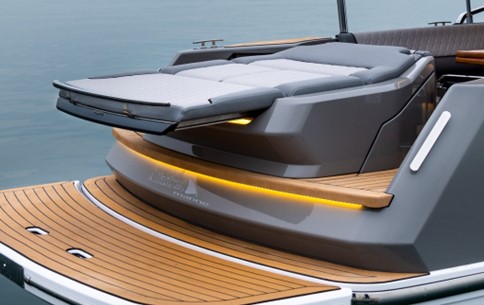
Top
One of the most distinctive features of the Alfastreet 23 Cabin EVO is the innovative hydraulic top. It has three positions: fully up, partially down for clearing low overheads while underway and fully down for trailering and storage. The aft section of the top also pushes up onto the forward part of the top opening the sky to the aft sun pad and the port and starboard bench seats.

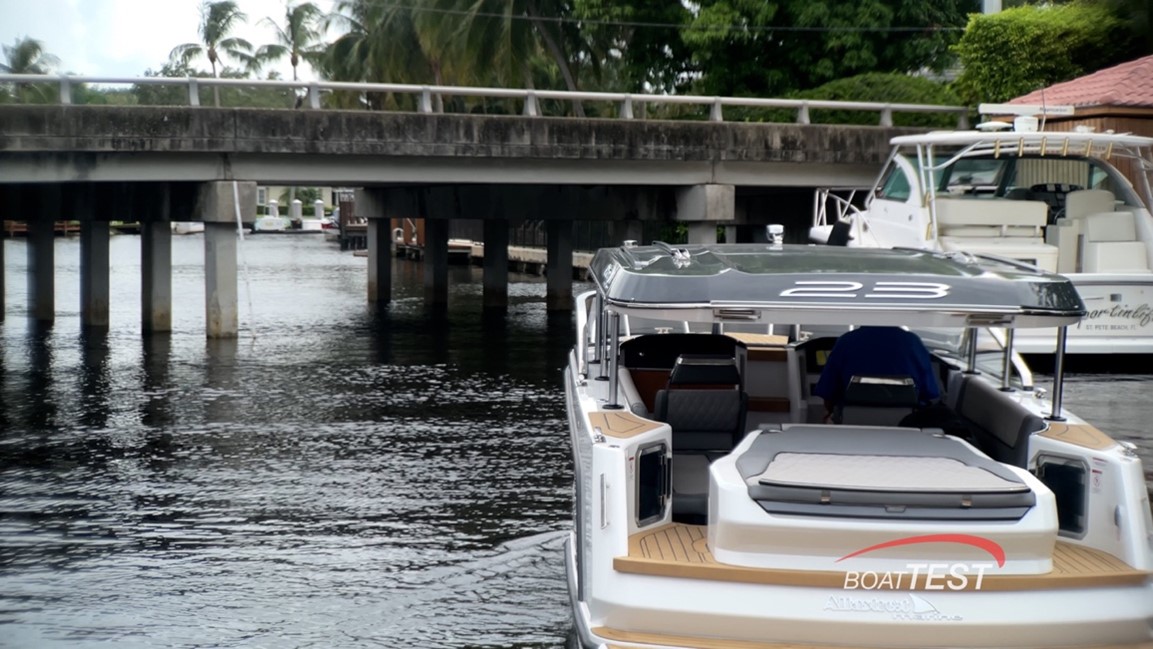
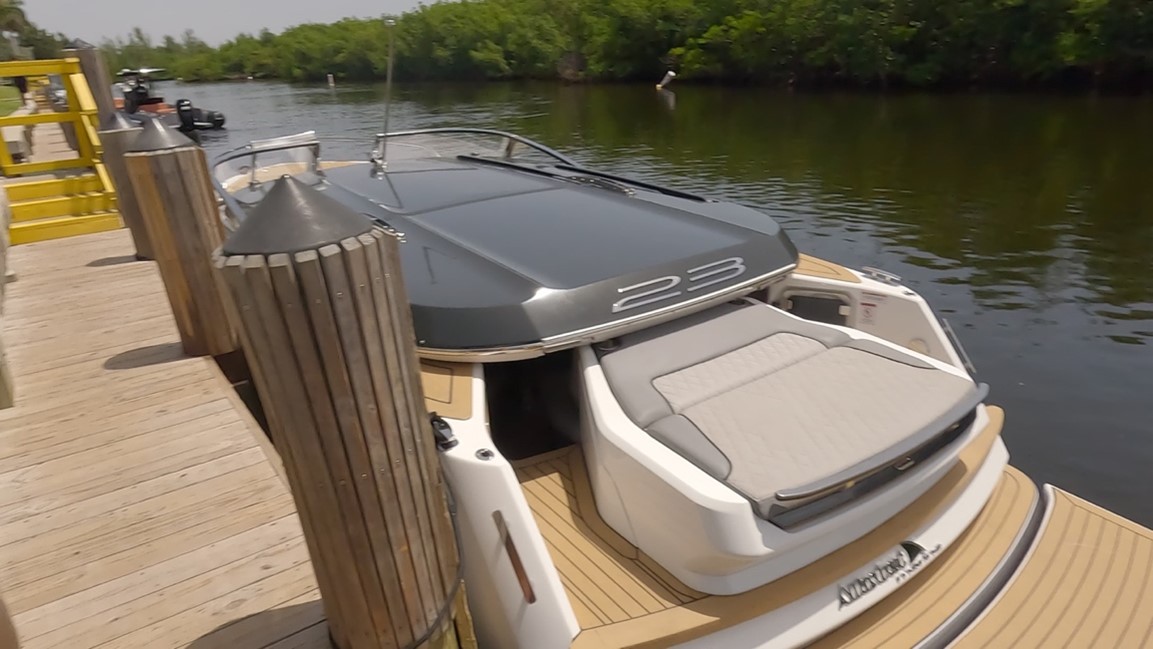
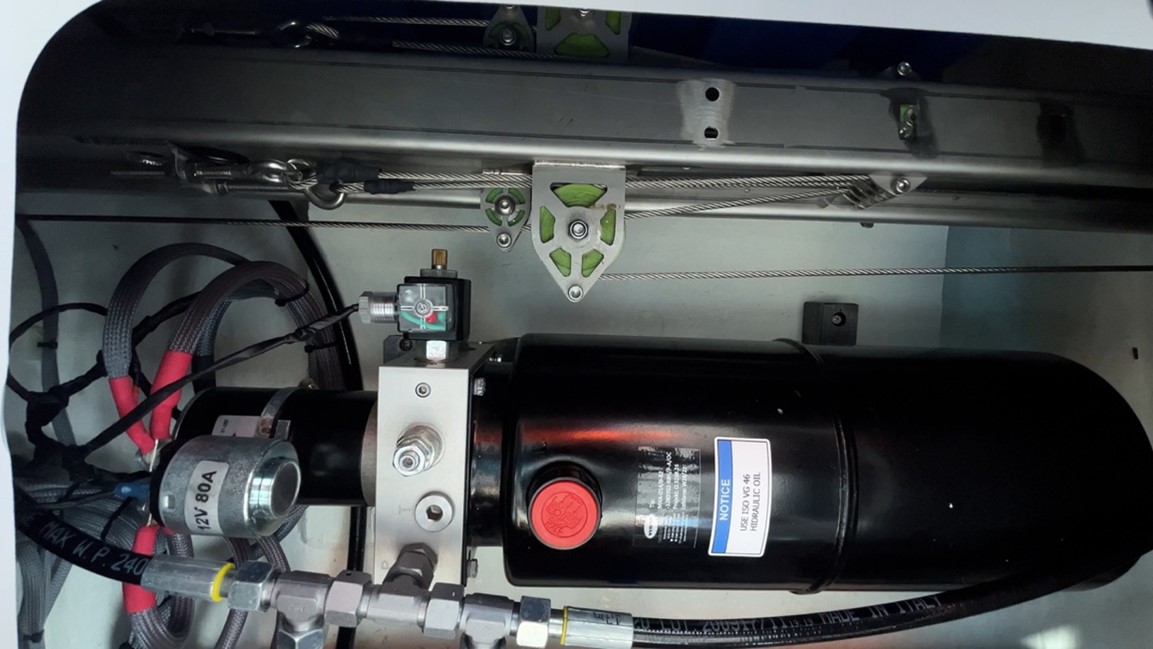

Interior
Forward Cabin
Under the bow is a small cabin that measures 6’ 9” W x 4’ 9” L and offers headroom of 3’ 9” from the floor to the head liner. In addition to the V-berth, there is a concealed marine sanitation device under the starboard cushion and breakers to port for all systems on the boat.
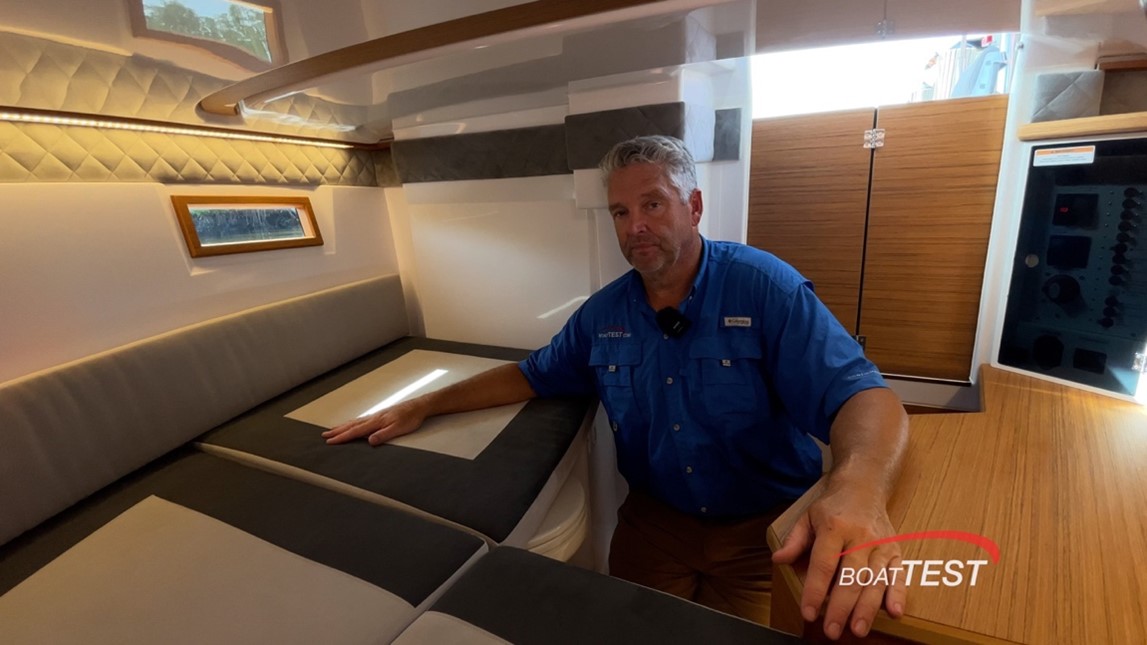
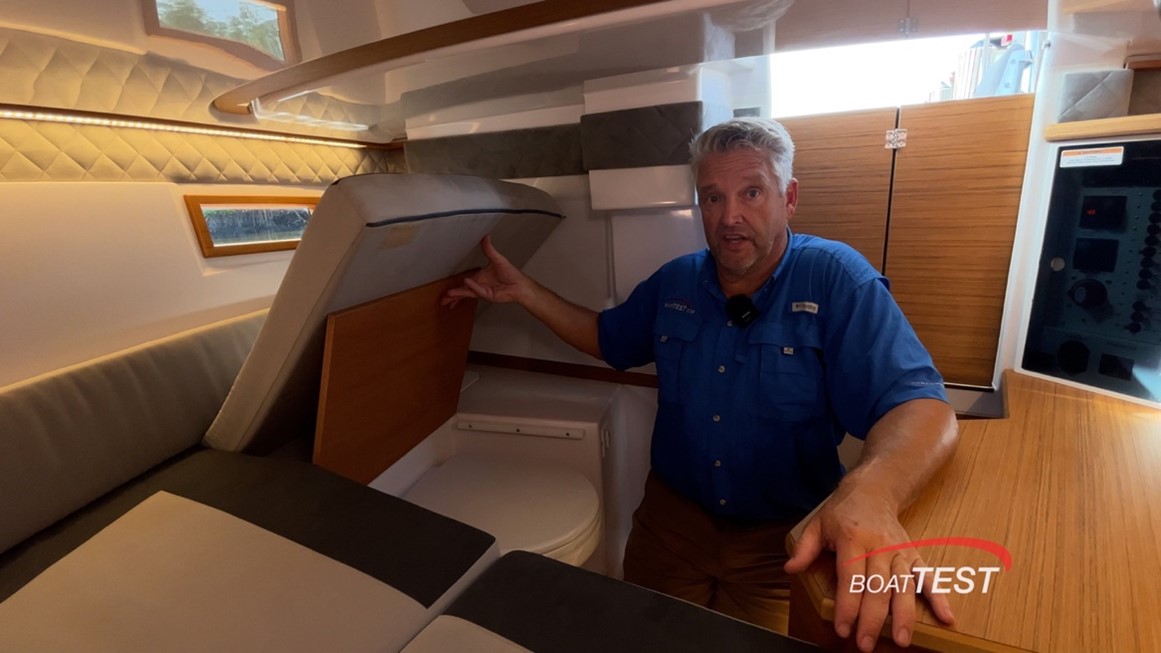
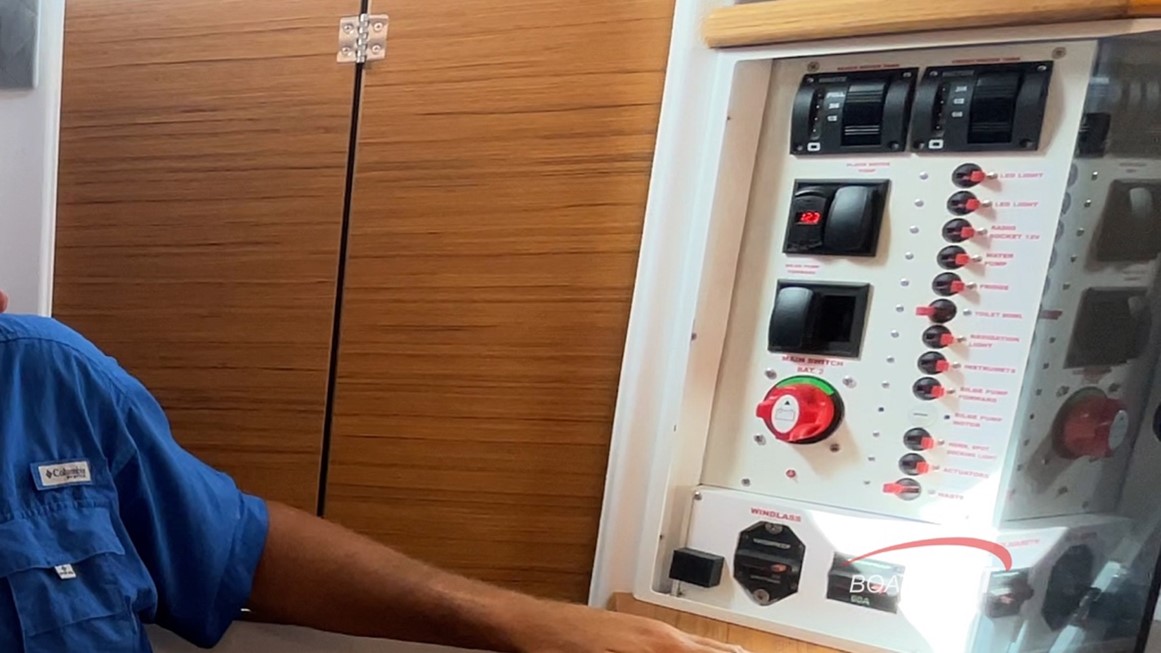
Propulsion System
The propulsion system for an electric boat is different from a gas-powered boat.
The Alfastreet 23 Cabin EVO’s propulsion system consists of multiple elements:
1. A way to accept power from outside the boat (120v)
2. A charger and conditioner to convert AC power to DC power for storage in the boat’s batteries
3. Controls to transfer the stored energy to the motor
4. The motor converts stored energy into mechanical energy by turning the propeller, which creates thrust to move the boat forward or aft.
External Power
Being a European built boat, the power input is slightly different than standards in the US. The input to the cable has a 240v 50 amp receptible. However, 240v 50A cannot be connected to the boat. It requires 120v 30 amp. The cable comes with an adapter to plug into the 120v 30 amp power poles which are standard in the US. There is also an adapter that allows the 23 Cabin EVO to plug directly into a 120v standard outlet.
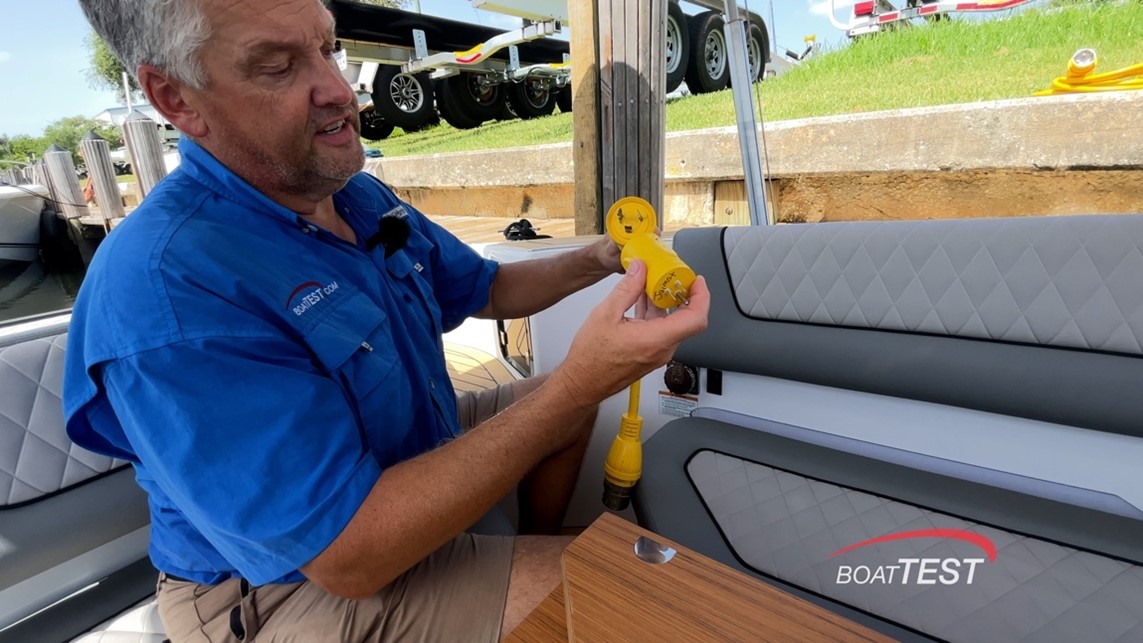
There is also an innovative jumper system concealed just to port of the aft cockpit seat. This allows power to be supplied to the 23 Cabin EVO through an external battery or other DC source. This will provide enough battery charge to return to the dock. The jumpers can also be connected to another boat to jump start it, using the power from the boat’s significant battery resources to assist another boat that is in a jam.

Charger and Conditioner
The aft hatch contains multiple elements critical to the operation of the Alfastreet 23 Cabin EVO’s batteries and motor. First is a ProSafe FS30 Galvanic Isolator. Next is the Piktronik DC Converter (Model KPO38-80) designed to convert the 48 volts of the batteries to 13.7 volts for any lower voltage system. And finally, a Pro Charge Ultra 48-15a to charge all the batteries on the boat.
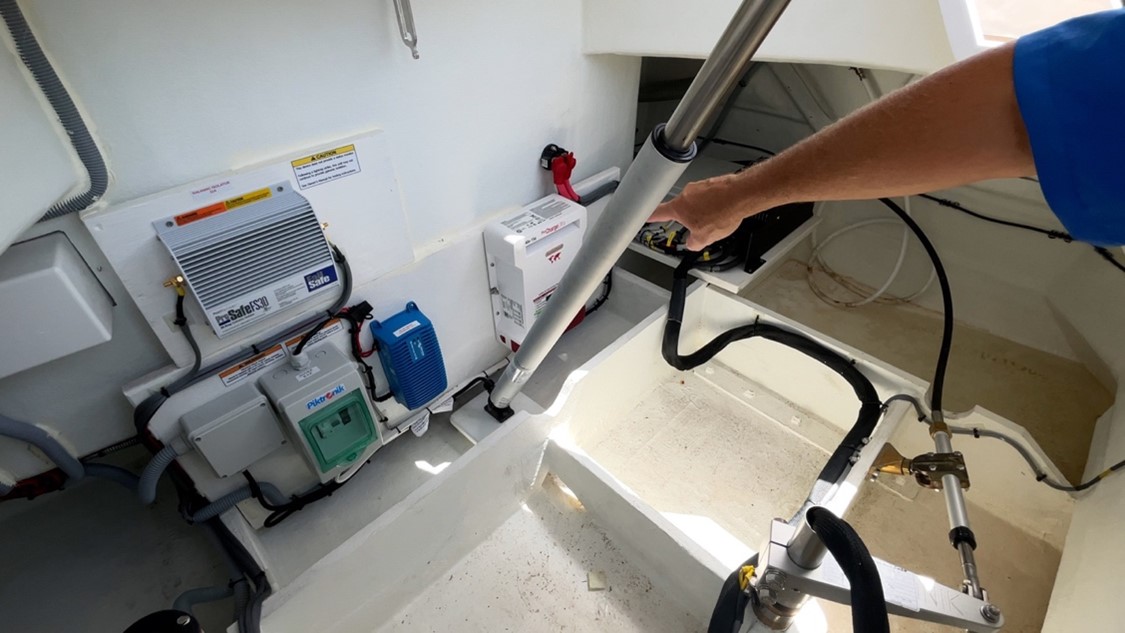
Batteries
The Alfastreet 23 Cabin EVO has 3 battery options. Our test boat had the Piktronik 10kW-48v with 4 AGM batteries providing 260 amp hours at 12 volts. There is also an option for a AQUAMOT 8kW-48v system with 4 AGM batteries. These batteries weigh slightly less and cost slightly less, but top end speed and runtime will both be marginally impacted. Lastly, there is an option and sufficient space to double the number of batteries (8 AGM batteries instead of 4) approximately doubling the runtime.

Controls
There are three elements to control the Piktronik motor.
First is a key on the dashboard of the helm. Unlike a key on a gas engine that starts the engine, this key simply “arms” the system to be ready to operate. The motor doesn’t turn, there is no draw of amps and the sound remains exactly as before the system is “armed.”
The second component of the controls is the shifter / throttle. This feels and operates quite differently from a normal gas engine shifter / throttle. First, there is no “detent” when the throttle is moved forward or aft that signifies the lowest operating engine speed and, thus, idle speed. In larger boat terms, this is called “clutch on”.
On the 23 Cabin EVO, barely move the throttle forward and the motor barely starts to turn. The 23 Cabin EVO’s application of power is proportional. On gas engines, once the throttle is at the detent and the boat is idling forward (or reverse), the movement of the throttle has to be more significant at slower speeds than near the top end, where a minimal application of throttle will cause a larger bump in RPM. On the Alfastreet, the movement of the throttle results in a liner application of power from just a few RPM to the maximum RPM of ~950.
The third component is the motor controller located in the aft compartment (Piktronik SAC-4). Its purpose is to take the signal from the shifter / throttle and apply that to the power from the batteries to then send a voltage to the motor that spins the propeller to create thrust.
Think of the system like an older dimmer switch on a light (newer LED dimmers work differently). When the dimmer switch (in this case the throttle) is on lower setting, less voltage and current go to the light (motor) and it is dimmer (less RPM). When the dimmer (throttle) is turned up all the way, the maximum allowable voltage and current is delivered, making the light (motor) as bright (fast) as possible.
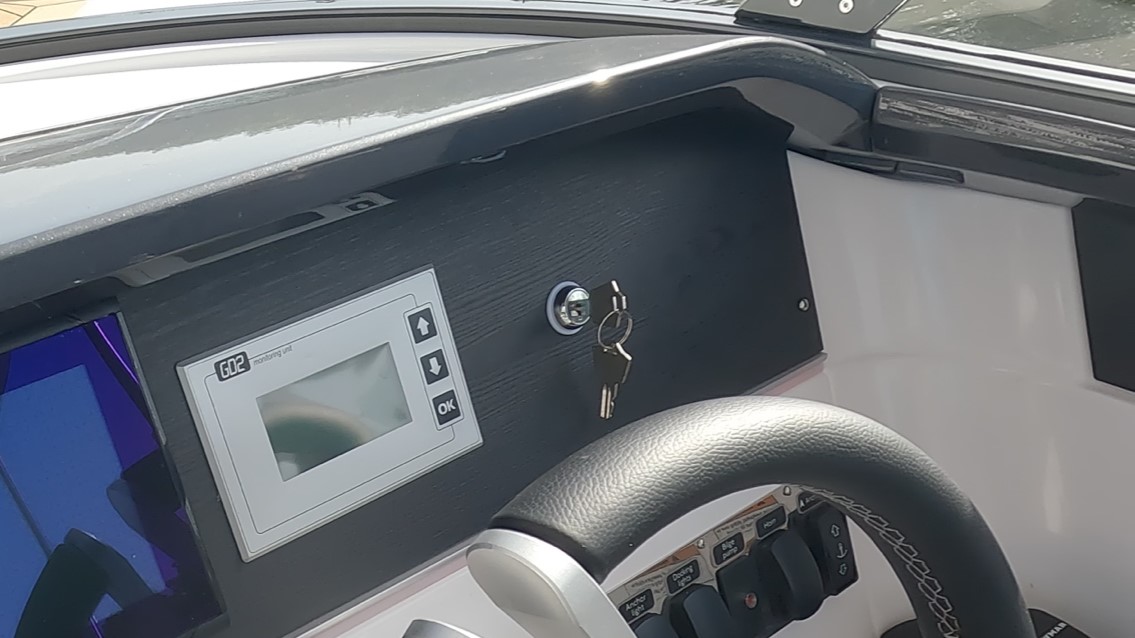
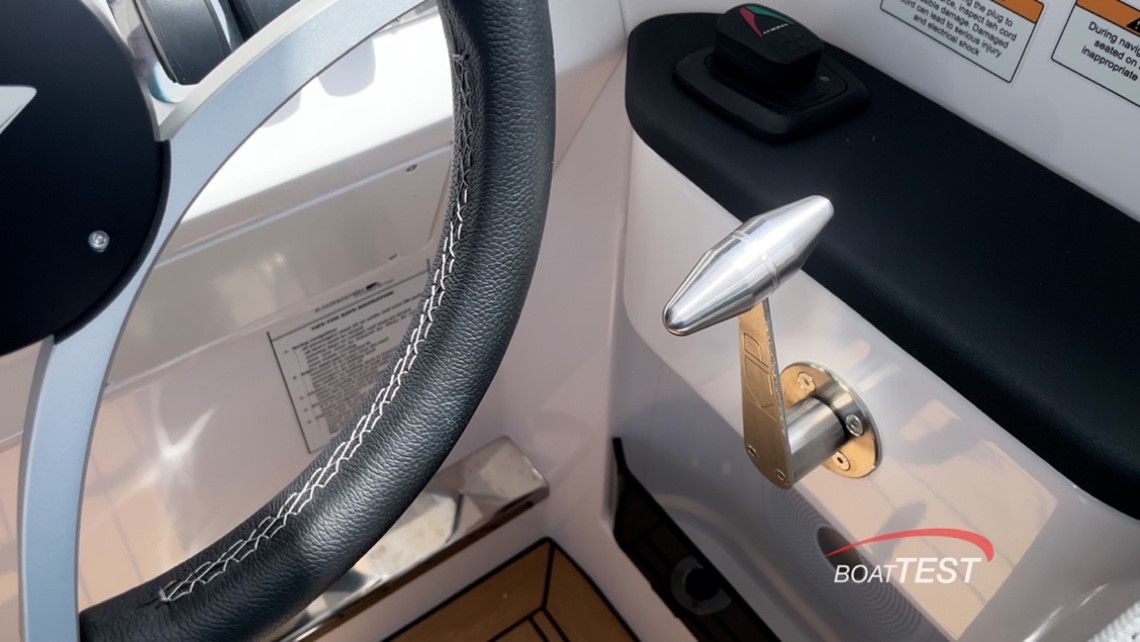
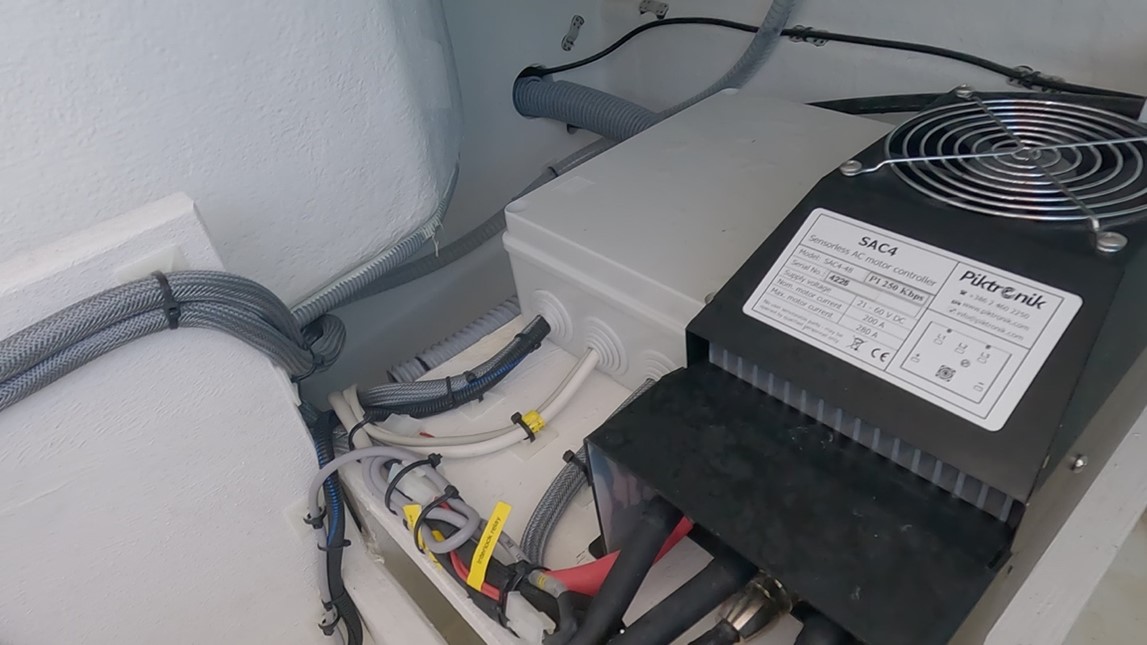
Motor
The purpose of the controls are to send variable amounts of power to the Piktronik electric motor. The top silver part of the rudder stock in the picture is inside the aft compartment. The cable from the controller goes down through the rudder post. The silver arm on the rudder post is the rudder tiller which connects through cables to the steering wheel. The gold section of the rudder post is the part that goes through the hull. The hull holds rudder bearings to keep water out. The final part of the stock between the gold section and the motor is the part of the rudder stock that is below the water line.
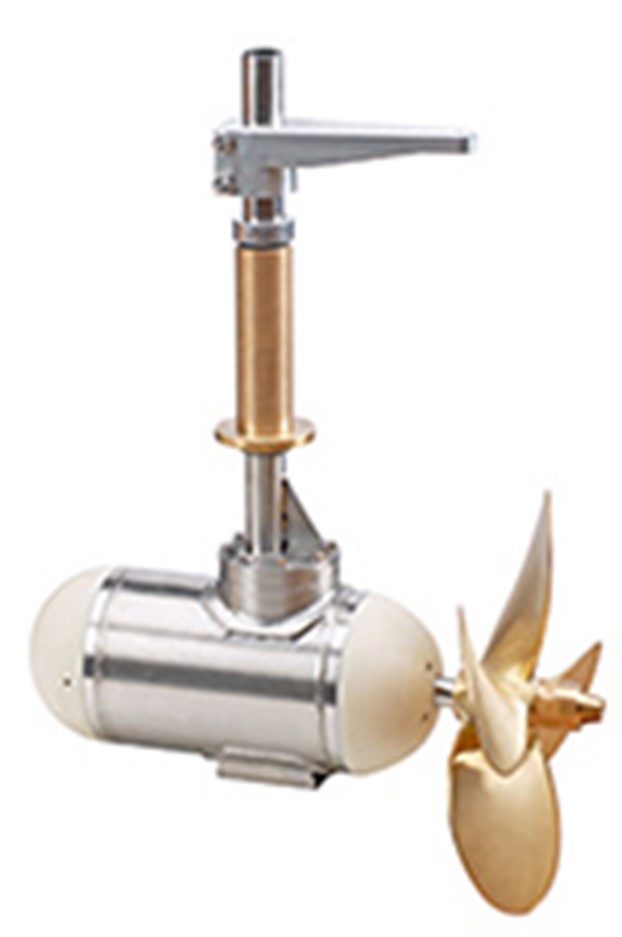
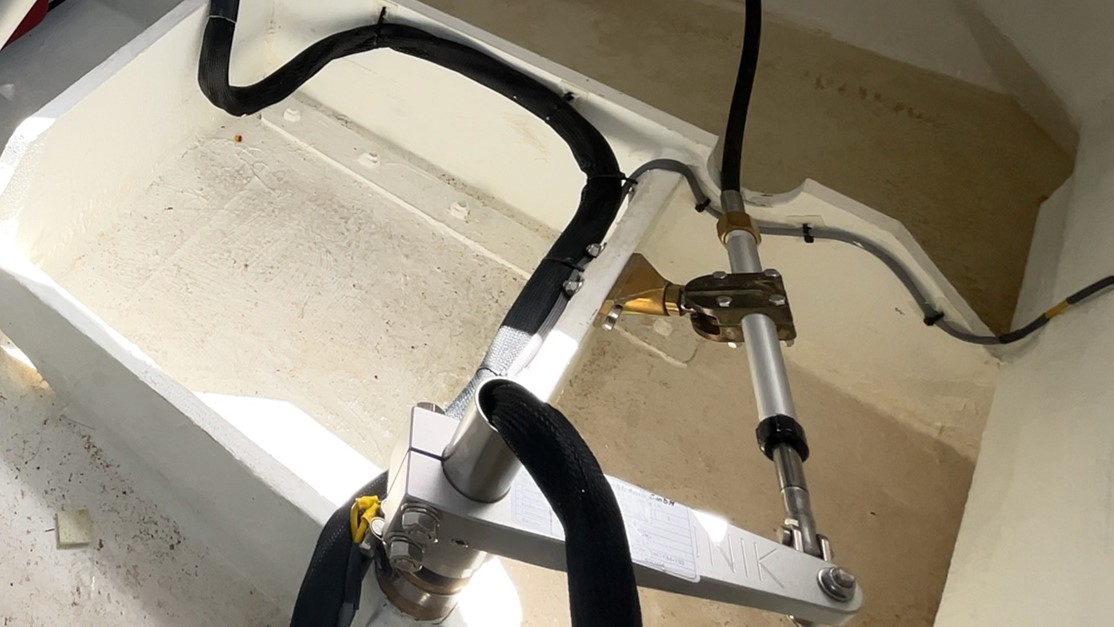
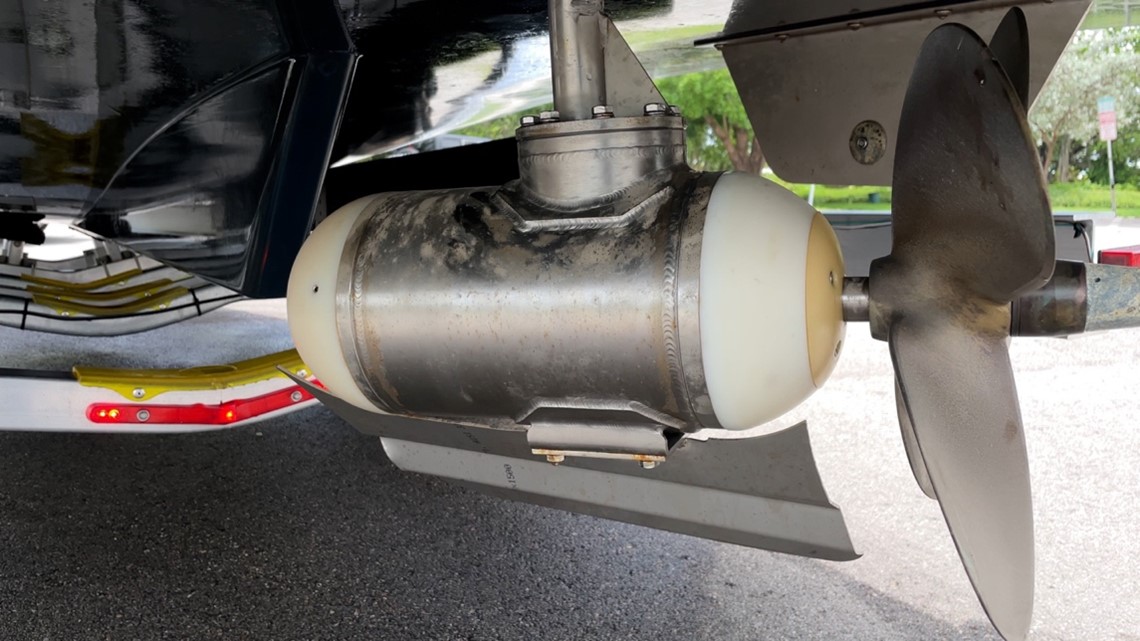
Additional Elements
As the 23 Cabin Evo is a single-screw boat, prop walk can be an issue. The Alfastreet 23 Cabin EVO has included two design features to help combat this issue.
First is an angled skeg on the bottom of the motor. Since the 23 Cabin EVO’s prop spins counterclockwise, also referred to as a left-turning prop, as seen from the stern (most common on single screw boats), it will cause the boat’s stern to “walk” to starboard. The addition of the skeg, which has some hydrodynamic design characteristics and angles to starboard, will combat the prop walk when under forward propulsion.
The second feature are two skegs forward and aft that will help the 23 Cabin EVO track straight when underway.
While operating the boat, I experience zero prop walk during either forward or aft movement. The application of a small amount of helm correction will correct any prop walk which might be experienced.
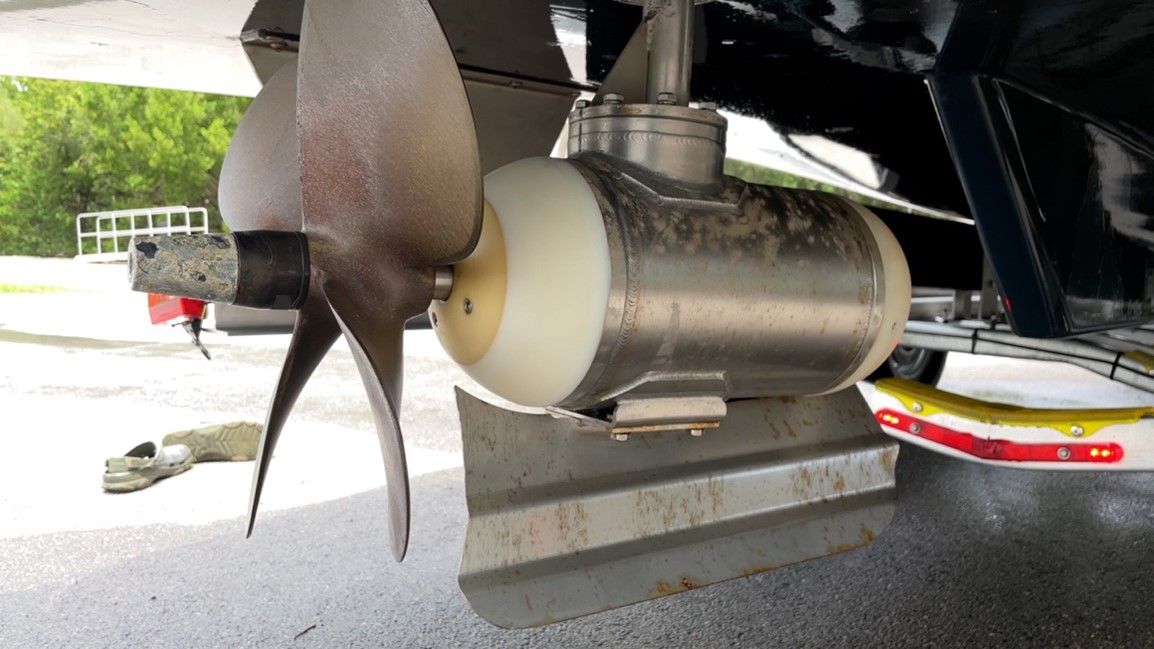
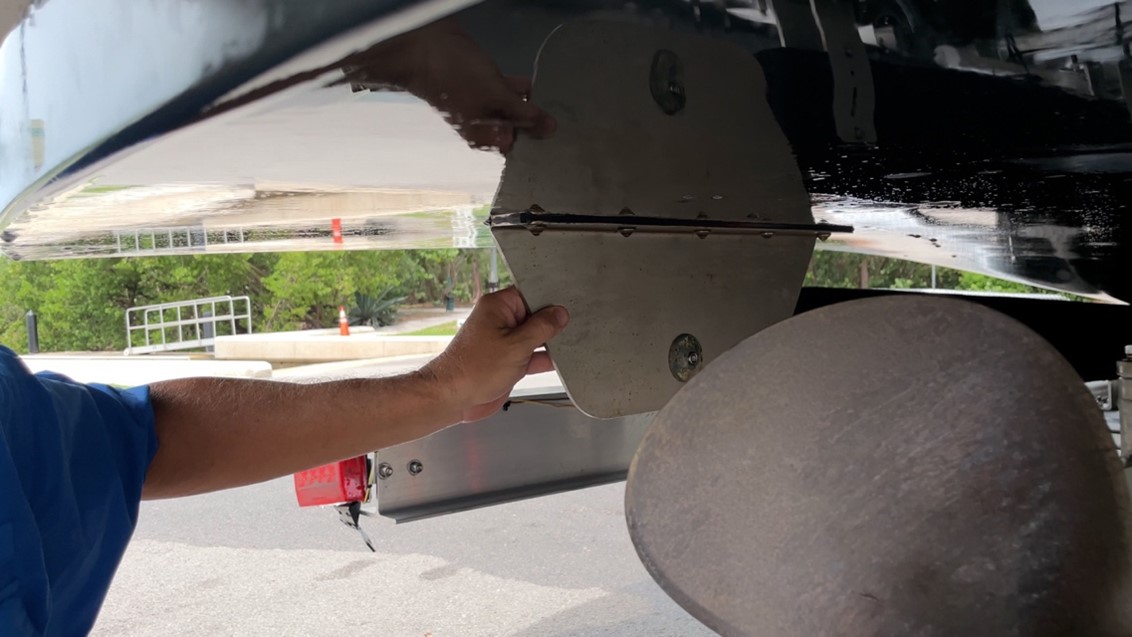
Observations
The Alfastreet 23 Cabin EVO is breaking new ground in the electric boat category. Instead of trying to compete head-to-head with similar-sized boats with 150+ horsepower engines and planing top speeds, the 23 Cabin EVO embraces the “enjoy the ride” attitude of a cocktail cruiser. After decades of operating boats and helping people buy the right boat, I can safely say, with a few exceptions, that around 70+% of the time spent on boats is in the exact way in which the 23 Cabin EVO was designed. Alfastreet has embraced that in this sleek-looking boat which even a novice boater can operate with ease. The low maintenance and durability of electric propulsion systems make her a very attractive alternative to boats with a combustion engine. I thoroughly enjoyed operating the Alfastreet 23 Cabin Evo. It was a calm and relaxing experience that is likely to entice any buyer looking for a boat of this class.
Remember, life is better on a boat!
Captain Gregg
[email protected]
